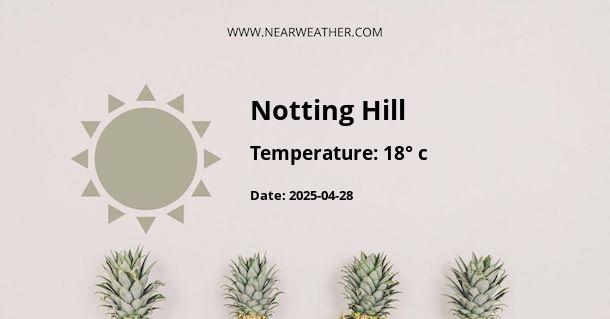Climate and Weather in Notting Hill, Australia
Notting Hill is a charming suburb located in the southeastern region of Melbourne, Australia. It offers a pleasant climate throughout the year, characterized by mild temperatures, ample sunshine, and moderate rainfall. Understanding the climate and weather patterns of Notting Hill is essential for both residents and visitors to plan their activities and make the most of their time in this beautiful location.
Temperature
The temperature in Notting Hill, like the rest of Melbourne, is influenced by its coastal location and the surrounding topography. The suburb experiences a temperate oceanic climate, with warm summers and cool winters.
During the summer months of December to February, temperatures in Notting Hill typically range from 20°C (68°F) to 26°C (79°F). January is usually the warmest month, with average highs of around 26°C (79°F). However, occasional heatwaves can cause temperatures to soar above 35°C (95°F).
In contrast, the winter months of June to August bring cooler temperatures to Notting Hill. Average temperatures during this period range from 6°C (43°F) to 14°C (57°F), with July being the coldest month. Frost and occasional snowfall are rare in this region.
Overall, Notting Hill enjoys a moderate temperature range throughout the year, making it a comfortable place to live or visit.
Sunshine
Notting Hill experiences a generous amount of sunshine, providing residents and visitors with ample opportunities to enjoy outdoor activities and explore the surroundings.
On average, Notting Hill receives approximately 2,300 hours of sunshine per year. This translates to around 6 hours of sunshine per day. The summer months generally have longer daylight hours, with up to 9 hours of sunshine per day.
The abundance of sunshine in Notting Hill contributes to its vibrant and lively atmosphere, allowing people to engage in various outdoor pursuits throughout the year.
Rainfall
Notting Hill receives a moderate amount of rainfall spread fairly evenly throughout the year. The suburb experiences a temperate climate with no distinct wet or dry season.
On average, Notting Hill receives around 600-700 millimeters (24-28 inches) of rainfall annually. The wettest months are typically in spring (September to November) and autumn (March to May), while the summer months tend to be drier.
The rainfall in Notting Hill is generally well-distributed, ensuring the surrounding landscapes remain lush and green throughout the year.
Weather Hazards
While Notting Hill enjoys a generally favorable climate, it is important to be aware of potential weather hazards that can occur in the area.
During the summer months, heatwaves can occasionally lead to high temperatures and increased risk of bushfires. It is essential to stay informed about any fire danger warnings and follow the instructions of local authorities.
Furthermore, as with any coastal location, Notting Hill is susceptible to occasional storms and heavy rainfall. It is important to stay updated with weather forecasts and be prepared for possible disruptions.
Conclusion
Notting Hill, Australia, offers a delightful climate throughout the year, with mild temperatures, ample sunshine, and moderate rainfall. The suburb's temperate oceanic climate ensures comfortable living conditions and provides numerous opportunities for outdoor activities.
Whether you are a resident or planning a visit to Notting Hill, understanding the climate and weather patterns will help you make the most of your time in this charming suburb.
A - Notting Hill's Latitude is -37.904999 & Longitude is 145.142700.
A - Weather in Notting Hill is 18° today.
A - Climate Conditions in Notting Hill shows overcast clouds today.
A - Humidity in Notting Hill is 62% today.
A - Wind speed in Notting Hill is 7.16 km/h, flowing at 221° wind direction. today.
